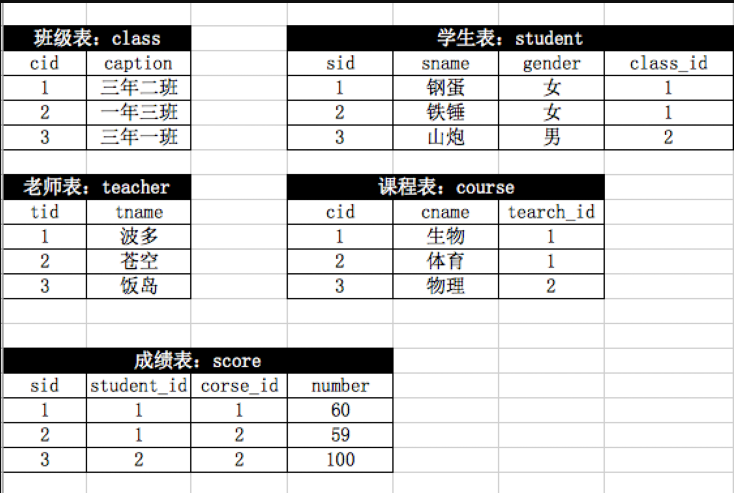完成下例sql语句的编写
用户表
create table user(
id int not null unique auto_increment,
username varchar(20) not null,
password varchar(50) not null,
primary key(username,password)
);
insert into user(username,password) values
('root','123'),
('egon','456'),
('alex','alex3714')
;
用户组表
create table usergroup(
id int primary key auto_increment,
groupname varchar(20) not null unique
);
insert into usergroup(groupname) values
('IT'),
('Sale'),
('Finance'),
('boss')
;
主机表
create table host(
id int primary key auto_increment,
ip char(15) not null unique default '127.0.0.1'
);
insert into host(ip) values
('172.16.45.2'),
('172.16.31.10'),
('172.16.45.3'),
('172.16.31.11'),
('172.10.45.3'),
('172.10.45.4'),
('172.10.45.5'),
('192.168.1.20'),
('192.168.1.21'),
('192.168.1.22'),
('192.168.2.23'),
('192.168.2.223'),
('192.168.2.24'),
('192.168.3.22'),
('192.168.3.23'),
('192.168.3.24')
;
业务线表
create table business(
id int primary key auto_increment,
business varchar(20) not null unique
);
insert into business(business) values
('轻松贷'),
('随便花'),
('大富翁'),
('穷一生')
;
建关系:user与usergroup
create table user2usergroup(
id int not null unique auto_increment,
user_id int not null,
group_id int not null,
primary key(user_id,group_id),
foreign key(user_id) references user(id),
foreign key(group_id) references usergroup(id)
);
insert into user2usergroup(user_id,group_id) values
(1,1),
(1,2),
(1,3),
(1,4),
(2,3),
(2,4),
(3,4)
;
建关系:host与business
create table host2business(
id int not null unique auto_increment,
host_id int not null,
business_id int not null,
primary key(host_id,business_id),
foreign key(host_id) references host(id),
foreign key(business_id) references business(id)
);
insert into host2business(host_id,business_id) values
(1,1),
(1,2),
(1,3),
(2,2),
(2,3),
(3,4)
;
建关系:user与host
create table user2host(
id int not null unique auto_increment,
user_id int not null,
host_id int not null,
primary key(user_id,host_id),
foreign key(user_id) references user(id),
foreign key(host_id) references host(id)
);
insert into user2host(user_id,host_id) values
(1,1),
(1,2),
(1,3),
(1,4),
(1,5),
(1,6),
(1,7),
(1,8),
(1,9),
(1,10),
(1,11),
(1,12),
(1,13),
(1,14),
(1,15),
(1,16),
(2,2),
(2,3),
(2,4),
(2,5),
(3,10),
(3,11),
(3,12);
编写sql语句 设计下图中的表,并说明相互之间的关系
